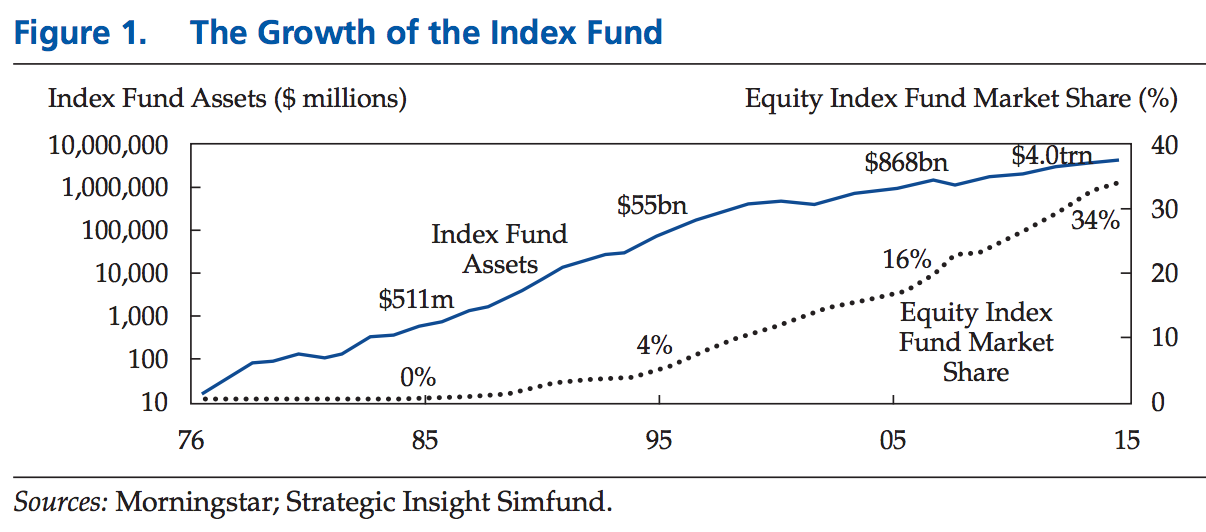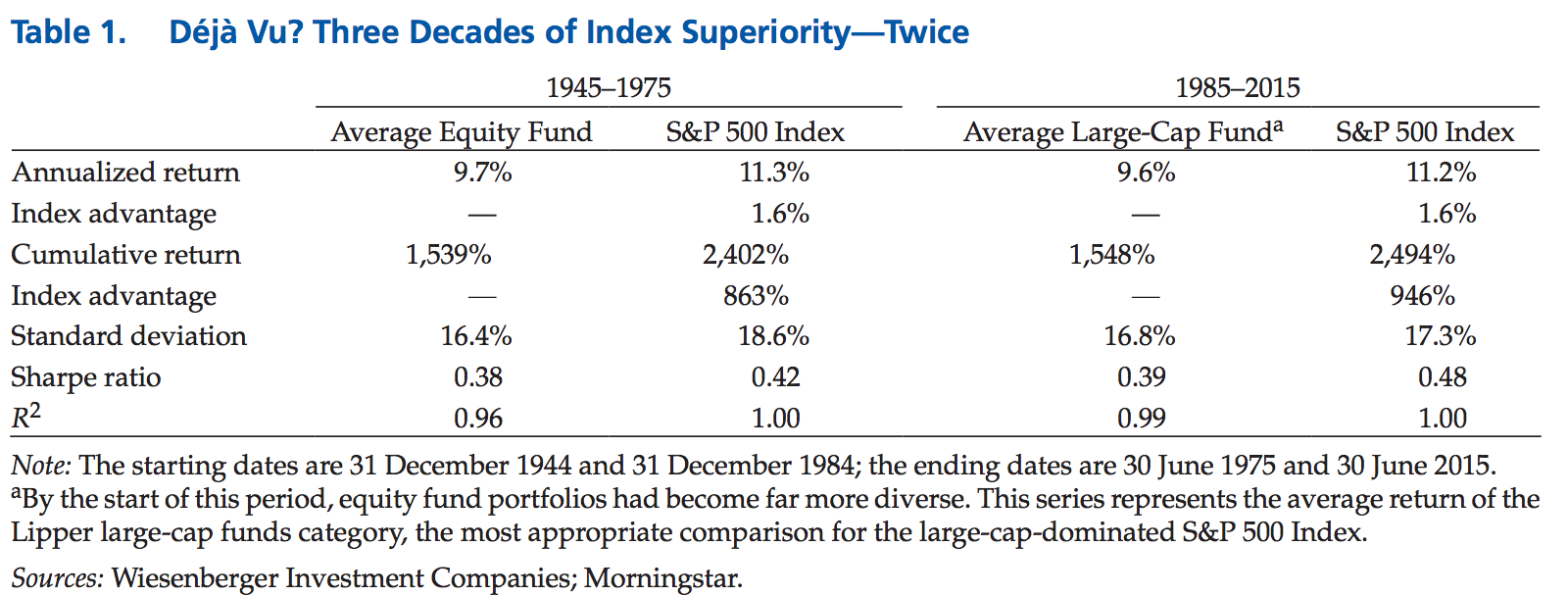In the latest issue of the Financial Analysts Journal, Vanguard’s John Bogle penned quite the reflection piece on index funds. It was part history lesson and part victory lap on the rise of the low-cost investing revolution:
During those seven years, investors have made net purchases of almost $1 trillion in passively managed index funds even as they have liquidated, on balance, $600 billion of their holdings in actively managed equity funds—a remarkable $1.6 trillion swing in investor preferences. Such a dramatic turnabout in investment strategy is, I believe, without precedent in the mutual fund industry
Index fund now represent a $4 trillion behemoth in the fund industry:

Bogle even updated one of his famous mutual fund performance studies to give a clear reason as to why so many people have made the switch from active funds to index funds:

Bogle’s piece also provided some much needed context on the growth of the passive fund market, as well as a few warnings. Here I’ve condensed some of the main stats he laid out on the ETF industry (admittedly a fund structure he’s been against from the start):
- There’s $3.4 trillion in equity index mutual funds. Half of that — $1.7 trillion — is in stock ETFs.
- Out of the 1,800 total stock ETFs out there, only about 12 track the broad stock market, with a total of $337 billion in AUM. That’s just one-fifth of the total in equity ETFs. The remaining funds are much more focused — by sector, market cap, risk factors, leverage, country, region, etc.
- The turnover in ETFs is insane, to the tune of an annualized 864% for the largest 100 funds (the largest 100 stocks in the market turnover just 117% a year).
Bogle makes the case that many of these ETFs are index funds in name only. It’s not like the owners of these funds are using them for buy and hold purposes. ETFs are now used as trading, arbitrage and hedging vehicles by large institutional investors. Professional investors aren’t exactly all using ETFs as passive investment vehicles. This group obviously accounts for a large amount of that turnover number, so take it for what it’s worth.
But the cost to trade certain ETFs is now free on many platforms, so individual investors are using them as the new form of stock-picking. While the late-1990s bull market is remembered for spawning a large group of tech stock day-traders, the passive, low-cost revolution will lead to more and more tactical ETF-traders. The cost and ease of use is far too tempting to pass up as an easy form of speculation.
Instead of picking 20, 30 or 50 stocks individually, an individual investor can now buy a basket of stocks in basically anything they want. They can also utilize ETFs to lever their returns or use inverse ETFs to go short. ETFs will probably be the dominant form of active investing some day. There are also different degrees of active managements as Bogle alluded to in his piece:
Most of today’s 1,800 ETFs are less diversified, carry greater risk, and are used largely for rapid-fire trading—speculation, pure and simple. “Follow the money” is a useful aphorism to explain why Wall Street has jumped on the bandwagon of indexing, another surprising turnabout from the original concept
I’m not quite as skeptical as Bogle on ETFs as investment products. I think they’re great — low-cost, tax efficient and liquid with a transparent investing process to boot. Like every form of investing it all depends on who’s using them and how they’re being used.
Many are worried about a passive investing bubble. Maybe it’s a little overdone the past few years. But can you blame people when they see the evidence that’s so apparent? We shall see how passive many of these new adopters of indexing are during the next severe downturn. Fear and panic don’t really discriminate based on the type of investment product. Fund structure or costs won’t matter all that much to an undisciplined investor.
Source:
The Index Mutual Fund: 40 Years of Growth, Change, and Challenge (FAJ)
Further Reading:
Putting Passive Inflows Into Context
